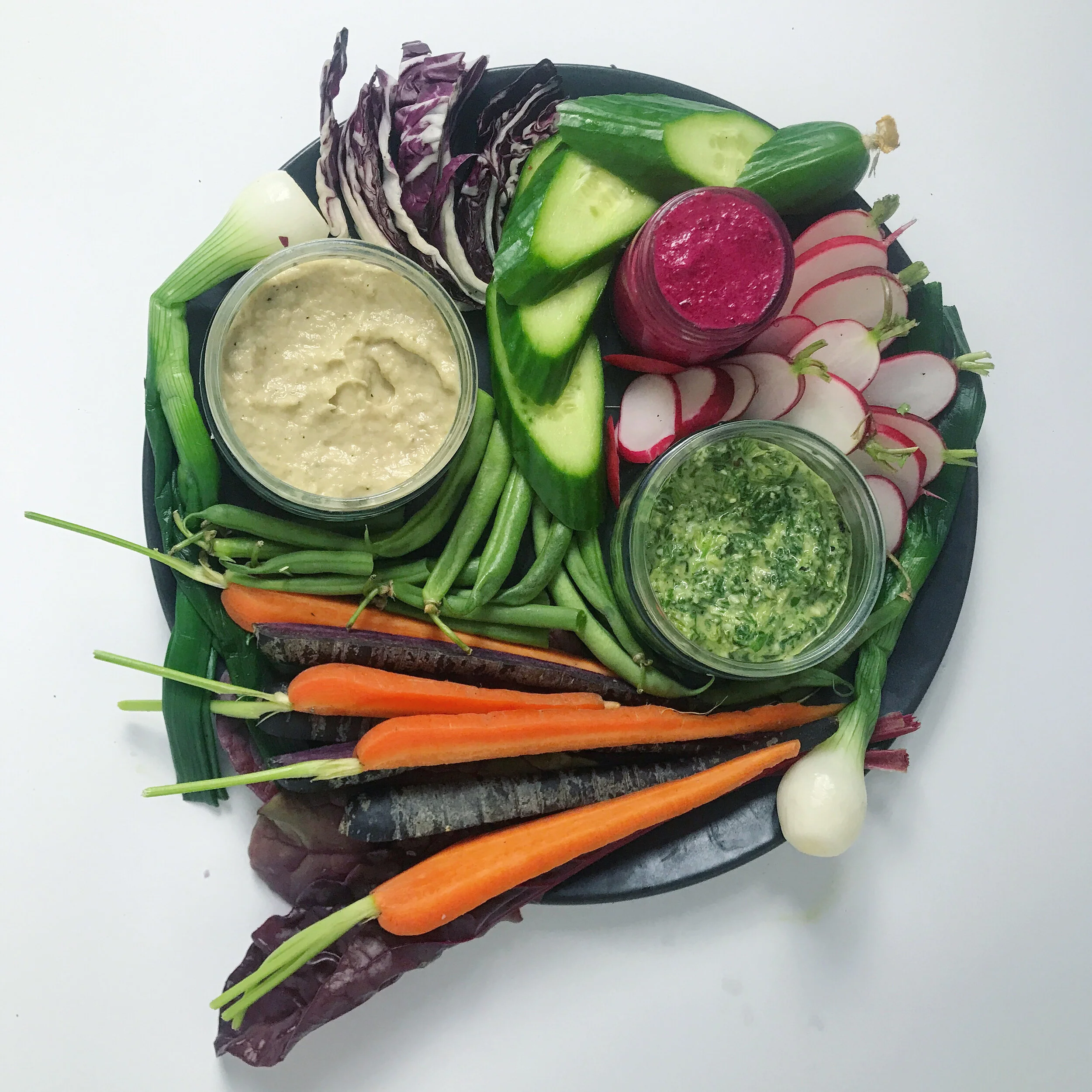Lacto-Fermentation Primer
The best things in life are free and the second-best ones are fermented. Beer, bread, and cheese are all transformed by a guided microbial party, each with very different vibes and guest lists. While I am not one to shy away from beer, bread, and cheese, there are lighter and brighter ways to behold the power of funk while savoring summer.
This year, I’m clinging to to each micro-season by taking a jar or two of the best vegetable of the moment and lacto-fermenting it. Lacto-fermentation is likely the earliest method of preservation humans developed, essentially letting the lactobacillus bacteria already on the produce convert sugars into acids which in turn repel any other spoiling microbes.
I’m a new resident of fermentation nation but have found that the depth of flavors lacto-fermentation builds from produce adds a ton of complexity to my fridge, and has helped me slow down while eating to really engage with the funk. You already have a few lacto-fermented goods in your pantry, like pickles, olives, or capers (or yoghurt and cheese), and the simple process lends itself to just about any vegetable or fruit you have on hand.
Successful lacto-fermentation is kickstarted by immersing the fermentable in brine, which kills off undesirable microbes and leaves an uncrowded buffet for the acid-producing lactobacillus. Saltwater alone is a great preservative, but adding fermented acids and keeping the environment oxygen-poor helps naturally extend the shelf life of the fermentable for many, many months in the fridge.
Generally, you’re going to want to follow these basic steps:
Gently clean fermentables –– don’t want to be too rough and decimate the lactobacillus on their surface.
Cut up fermentables to a comfortable size for the jar.
Thoroughly clean a large jar with a loose-fitting lid and place on a scale.
Add your fermentables to the jar, leaving a good inch of headspace (as gas is produced, the water level rises and will overflow the jar).
Fill jar with water just above fermentables.
Measure combined weight of fermentables and water.
Multiply that weight by 2% to calculate your weight of salt.
Pour the water into a bowl, whisk with the salt until combined, and pour back into jar.
Prepare fermentation weight if needed –– if some fermentables are floating above water, either find a smaller lid to place on top of the floating mass or insert a plastic bag into the jar and fill with water to apply downward force on anything floating up.
Loosely twist lid onto jar (should be easy to unscrew –– nothing should get in, but gas should escape).
Burp the jar daily, giving it a sniff to track its progress. The ferment may turn a bit cloudy, but as long as there’s no growth on the top (see note on kham yeast below), nothing to worry about.
Once you’ve reached your desired fermentation level (within 2-5 days), pop the jar in the fridge where fermentation comes to a near halt. If you used spices or aromatics, I like to filter these out at this stage if the flavor is at a good level so nothing gets bitter.
Our bedroom-turned-fermentation-station. Left to right: sourdough starter, hot peppers, carrots, red wine and champagne vinegars, and peppers for hot sauce.
The process lends itself to most anything that grows, but there are a few general tips to ensure a great end product:
Think about texture
Generally, you’re looking for either a rigid vegetable that will retain its crunch (carrots, cucumbers, cabbage) or fruits that are pleasant when soft and spreadable from fermentation, like berries or plums. Produce in the middle, like a cucumber with ample soft seeds, can take on an unpleasant flaccidness. If you’re driving in the direction of crunch, your jar will benefit from a tannin-rich additive like a bay leaf or grape leaf.
Invite the right guests
The lactobacillus we need for these fermentations is, conveniently, everywhere –- on our skin, in the air, and on and in the surface of plants. However, ample pesticides can both damage the lactobacillus we need and introduce more pesticide into the end-product. This is a project to spring for the most beautiful, local, certified organic produce to make sure you’re building on a healthy microbial foundation, especially if you’re fermenting produce frequently applied with pesticides like the Dirty Dozen.
Make ‘em a nice home
Just like with sourdough starter, you’re building a specific environment in which only welcome microbes can thrive. For lacto-fermented produce, that means an oxygen-poor saltwater brine at room temperature. The lactobacillus happily chomp away at the sugars in the vegetable, but many of their unpleasant or dangerous microbial rivals can’t handle the salt or lack of water and lose out to our friendly funky bacteria.
Watch out for the bad guys
Overall, lacto-fermentation is wildly safe and you have a highly sensitive bit of equipment ready to ensure the end product is safe: your nose. The most common culprit is kahm yeast, a floating white layer that can take over the top of your jar if there’s too much oxygen or fermentables floating up to the top. Kahm yeast is harmless (though it has an unpleasant flavor) and can simply be skimmed off (which you should do before other stuff grows on the kahm yeast).
So, just get into it! The fermentation subreddit, the Noma Fermentation Lab instagram, and YouTube cooks like Joshua Weissman are great resources, as is the Noma Guide to Fermentation cookbook. Lacto-fermentation is a great starting point that might lead you to more challenging ferments like tempeh. But in the meantime, I say just get started somewhere –– go grab a handful of spicy peppers and onions for a hot sauce, blueberries for a funky jam, or crisp pickling cucumbers for pickles, and get ready to engage with another dimension of the best of summer flavors.



